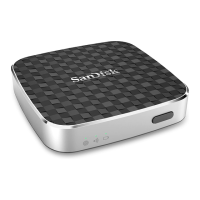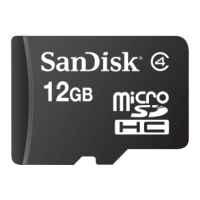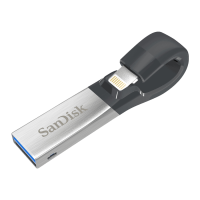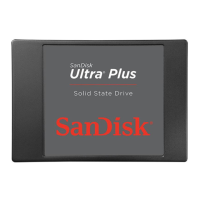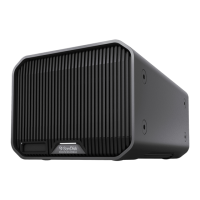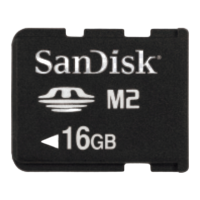Do you have a question about the SanDisk CompactFlash and is the answer not in the manual?
| Voltage | 3.3V or 5V |
|---|---|
| Form Factor | CompactFlash |
| Capacity | Varies by model |
| Read Speed | Up to 160MB/s (varies by model) |
| Operating Temperature | 0°C to 70°C |
| Storage Temperature | 85°C |
Defines the key features and specifications of CompactFlash Memory Cards and interface requirements.
Lists available CompactFlash Memory Card capacities and model numbers, including standard and industrial versions.
Highlights the main features of CompactFlash Memory Cards, such as form factor, power, performance, and ruggedness.
Explains the electrical compatibility of CompactFlash Memory Cards with PCMCIA specifications.
Provides information on compatibility with the official CompactFlash Specification published by the Association.
Compares CompactFlash Memory Cards to SanDisk's previous FlashDisk products, noting differences and compatibility.
Details and compares the system power requirements for CompactFlash Memory Cards versus SDP5A FlashDisk.
Describes the intelligent subsystem and key capabilities of CompactFlash Memory Cards.
Explains how the intelligent controller makes CompactFlash Cards independent of underlying flash technology evolution.
Details the sophisticated defect and error management system, including ECC and spare sector usage.
Defines the operating and non-operating temperature, humidity, vibration, and shock specifications.
Specifies the DC input voltage and current requirements for both standard and industrial versions.
Outlines the start-up times, data transfer rates, and controller overhead for various operations.
Provides physical dimensions and weight specifications for CompactFlash Memory Cards.
Lists the specific capacity for various models, including sectors, heads, and cylinders.
Describes the required platform interface headers and the use of optional PCMCIA adapters for installation.
Details the 50-pin connector used for host connection to the CompactFlash Memory Card.
Lists signal/pin assignments and defines pin types (Input, Output, I/O) for different modes.
Explains the electrical operation and logic levels conforming to PCMCIA Release 2.1 specification.
Defines the DC characteristics, input leakage current, and input characteristics for the memory card.
Details the timing specifications for interface and bus operations, including read and write cycles.
Explains the configuration registers used to coordinate I/O spaces and interrupt levels.
Describes the function of attribute memory for identification and configuration information storage.
Details the Configuration Option Register used for interface, address decoding, and soft reset.
Provides information about the card's condition via the Card Configuration and Status Register.
Explains the 8-bit or 16-bit I/O transfer capabilities and the role of the -IOIS16 signal.
Describes the operation of the CompactFlash Card when configured in True IDE Mode for I/O operations.
Details the primary and secondary I/O decoding for accessing registers and data.
Explains how registers are accessed when using a contiguous block of I/O space.
Describes how CompactFlash Memory Card registers appear in the common memory space window.
Outlines the I/O decoding for the CompactFlash Memory Card when configured in True IDE Mode.
Describes the function and access combinations of data, error, and feature registers.
Explains the 16-bit Data Register used for transferring data blocks between the card and the host.
Details the Error Register for source of errors and the Status Register for device status.
Describes registers that return the CompactFlash Memory Card status when read by the host.
Summarizes the ATA command set, detailing classes, commands, codes, and register usage.
Explains the Check Power Mode command (98H, E5H) and its effect on card operation.
Describes the Erase Sector(s) command (C0H) used for pre-erasing data sectors.
Explains the Identify Drive command (ECH) for receiving parameter information from the card.
Details the Set Features command (EFH) used to establish or select card features.
Describes the Write Sector(s) command (30H, 31H) for writing data to sectors.
Explains the Write Sector(s) without Erase command (38H) for faster writes on pre-erased sectors.
This section describes the Card Information Structure (CIS) for the CompactFlash Memory Card.
Details the Device Info Tuple, including I/O device, speed, and device ID information.
Describes various Configuration Entry Tuples related to interface type, power, and I/O addressing.
Provides details on how to order CompactFlash Memory Cards, ImageMate drives, and evaluation kits.
Lists compatible system software, card readers/writers, and connectors for SanDisk CompactFlash cards.
Outlines options for obtaining technical support, including direct support, online resources, and Compuserve.
Provides contact information for SanDisk Applications Engineering for technical support.
Details access to SanDisk's Worldwide Web Site and Compuserve for product information and support.
Lists physical, electrical, mechanical, and environmental requirements for CompactFlash connectors.
States SanDisk's warranty for products being free of defects in materials or workmanship for one year.
Outlines general provisions, limitations, and waivers of liability under the limited warranty.
Details the procedure for returning defective products for warranty service, including required information.
